Don´t drink and drive – take the S11 Stadtbahn to the Volksfest
Be careful during the Volksfest, Frühlingsfest (spring festival) and Fasching (Mardi Gras) times... very careful! During these times of year, the police will regularly stop and test you for a sobriety check around the Stuttgart area. As the parking spaces around the festival are limited and people who park illegally are towed, it is also your best bet to take the public transportation.
From the main train station (Hauptbahnhof), the U11 leaves every 10 – 15 Minutes directly to the Volksfest.
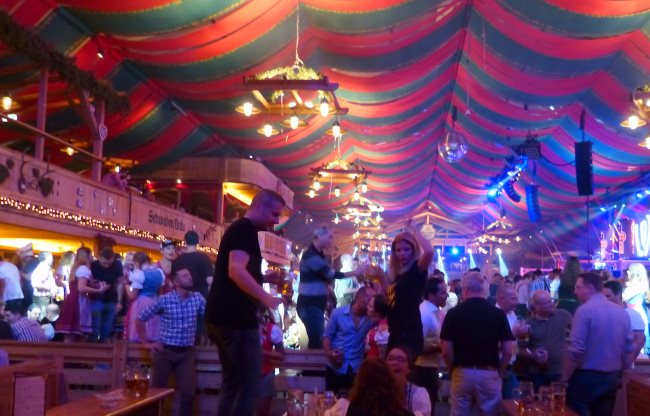
At the Volksfest the following are not allowed: dogs (except for seeing-eye dogs), weapons, knives and bottles. One should also avoid bringing large bags or backpacks for security reasons. Bags will be checked by security or the police.
Almost 200 years ago, on September 28, 1818, the first Volksfest was held. It only lasted a day and was more of an agricultural festival with horse racing and awards for livestock (like at a county fair). In the years to come, it just kept getting bigger and bigger and after World War II, in the 1950s, the celebration was lengthened to ten and then 12 days; since 1972 it has been going on for 16 days and since 2007 the Volksfest has been lengthened to 17 days with the opening ceremony on Friday instead of Saturday.
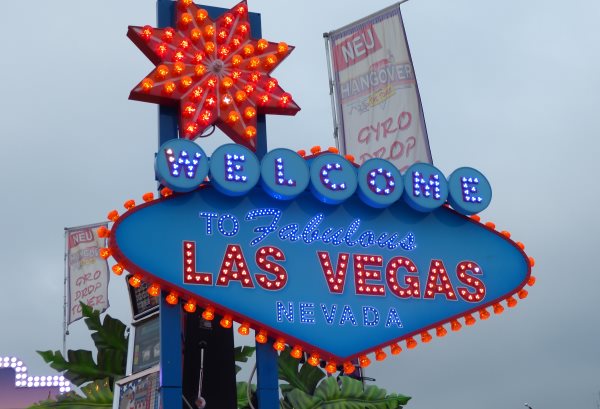
You can easily spend an entire day at the Volksfest. The paths and streets at the festival total over three miles (5km), and there is always something to see and experience.

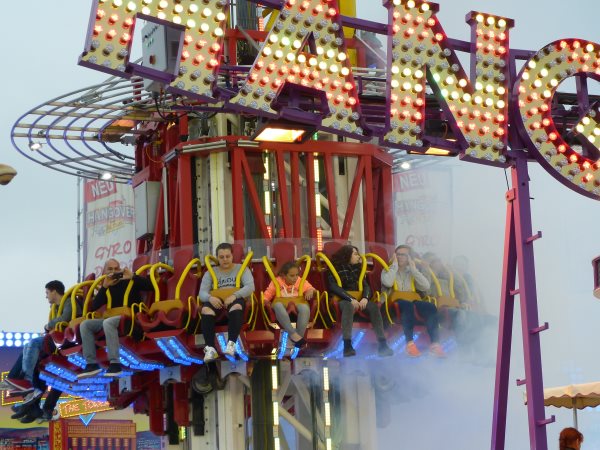
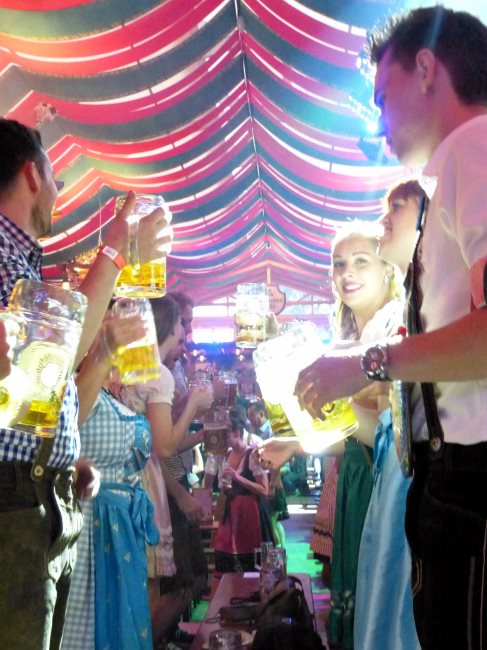
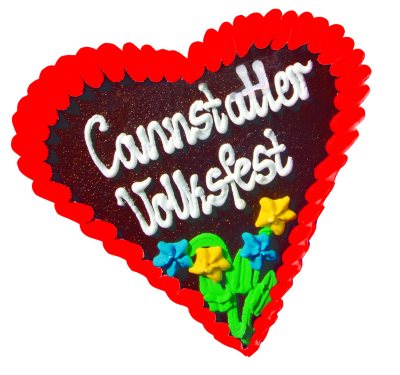 The Dirndl, the typical dress worn by women to the festival, ties in the following fashion:
The Dirndl, the typical dress worn by women to the festival, ties in the following fashion:
The apron bow tied to the left side of the dress indicates that the woman is single and eligible.
The apron bow tied to the right side indicates that the woman is taken.
The apron bow tied in the front middle indicates the wearer is a virgin.
The apron bow tied in the back can indicate the wearer is either a widow or a waitress.
When the seats in the tents get sparse, one usually has a better chance of getting in when wearing “Tracht“. (Lederhosen and/or Drindl). Dirndl and Lederhosen are typical for Bavarian; at the Oktoberfest in Munich almost 90% of the people will be wearing “Tracht”. However, in Stuttgart it is becoming more and more popular as well. If you are looking for peace and quiet, then you should not be going to the Volksfest. In every beer tent, you will find a party; the visitors dance on the benches (and tables!) and there are either live bands or DJs. Judging only on how it looks optically, the nicest tent (and the largest with 5,600 seats) is the Schwabenwelt as it is has much dark, rich wood as its inner décor. If you stay to the very end in a beer tent, you are going to have to expect a wait-time for the S-Bahn or U-Bahn – and the taxis are sparse as well. TIP: leave 30 minutes before close – it is much easier then. On Sunday, October 9th there is a large fireworks display at 9.30pm to celebrate the close of the festival. Monday, October 3rd is a national, German holiday where many visitors are to be expected.
Opening hours:
September 23 through October 9, 2016
Monday - Thursday 12pm – 11pm
Friday 12pm – 12am
Saturday 11am – 12am
Sunday 11am – 11pm
Special opening hours
Sunday, October 2nd 11am – 12am
Monday, October 3rd 11am – 11pm
Have fun at the Cannstatter Volksfest – “auf’m Wasen!”
pictures by Uwe Warnack and in.Stuttgart/Thomas Niedermüller
- Details
- Written by Uwe Warnack
- Parent Category: Magazine
- Category: Sightseeing
- Hits: 2290



Comments powered by CComment